Abstract
Net balances of amino acids were constructed for stages of development of a leaf of white lupin (Lupinus albus L.) using data on the N economy of the leaf, its exchanges of amino acids through xylem and phloem, and net changes in its soluble and protein-bound amino acids. Asparagine, aspartate, and γ-aminobutyrate were delivered to the leaf in excess of amounts consumed in growth and/or phloem export. Glutamine was supplied in excess until full leaf expansion (20 days) but was later synthesized in large amounts in association with mobilization of N from the leaf. Net requirements for glutamate, threonine, serine, proline, glycine, alanine, valine, isoleucine, leucine, tyrosine, phenylalanine, histidine, lysine, and arginine were met mainly or entirely by synthesis within the leaf. Amides furnished the bulk of the N for amino acid synthesis, asparagine providing from 24 to 68%. In vitro activity of asparaginase (EC 3.5.1.1) exceeded that of asparagine:pyruvate aminotransferase (EC 2.6.1.14) during early leaf expansion, when in vivo estimates of asparagine metabolism were highest. Thereafter, aminotransferase activity greatly exceeded that of asparaginase. Rates of activity of one or both asparagine-utilizing enzymes exceeded estimated rates of asparagine catabolism throughout leaf development. In vitro activities of glutamine synthetase (EC 6.3.1.2) and glutamate synthase (EC 1.4.7.1) were consistently much higher than that of glutamate dehydrogenase (EC 1.4.1.3), and activities of the former two enzymes more than accounted for estimated rates of ammonia release in photorespiration and deamidation of asparagine.
Full text
PDF
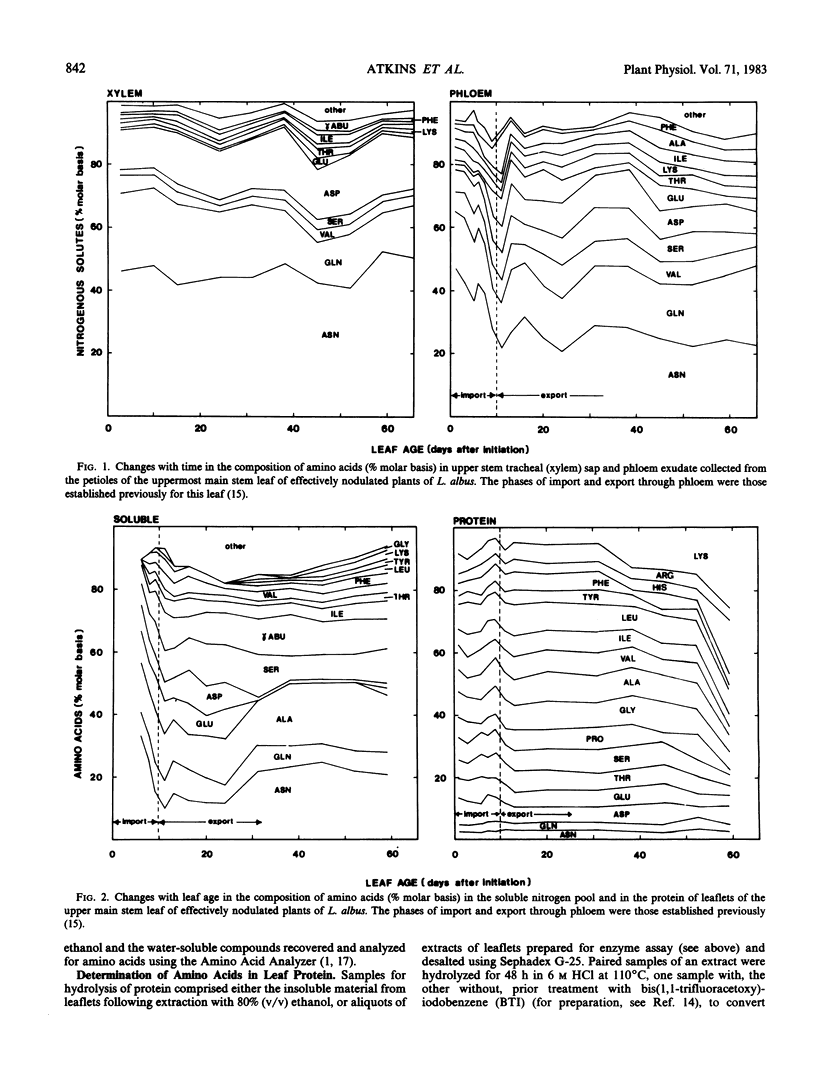
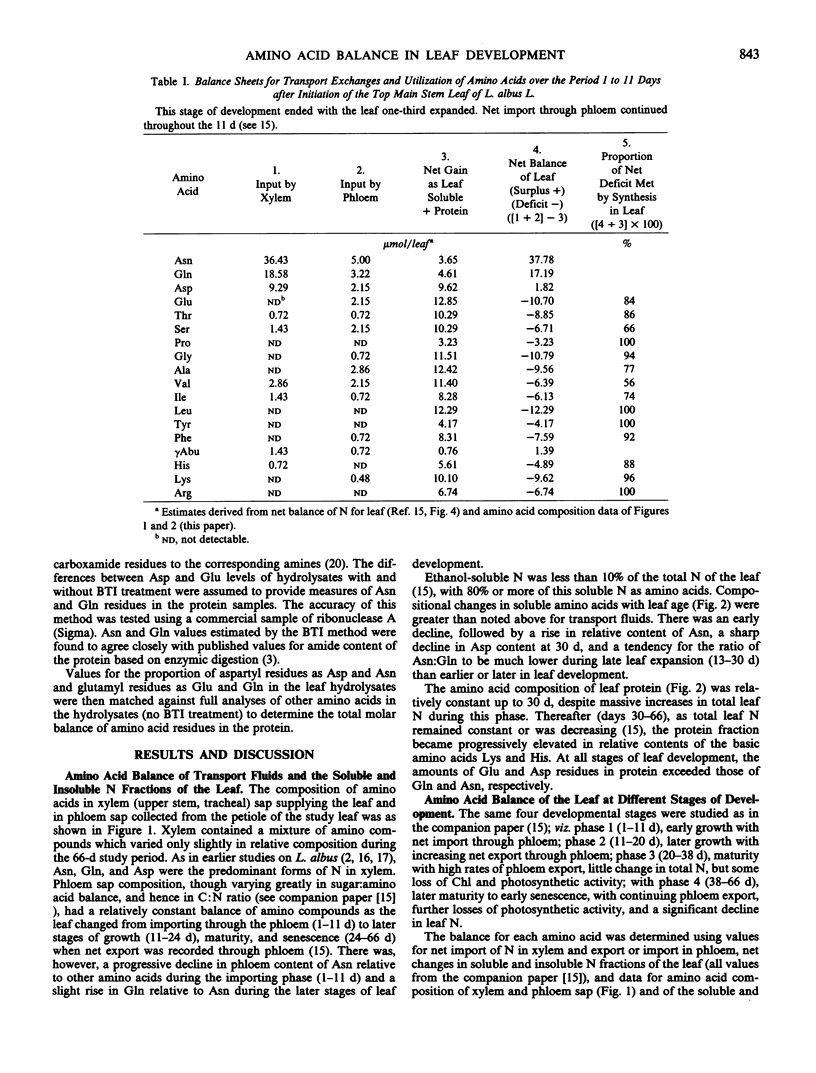
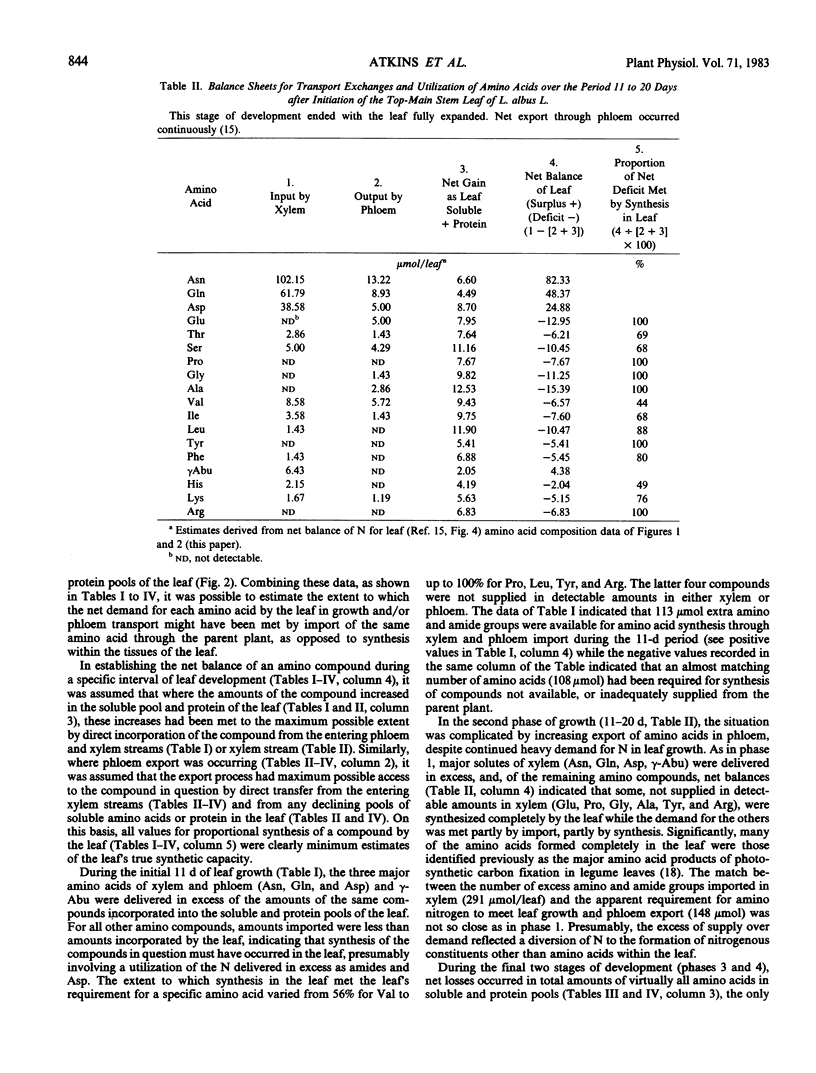
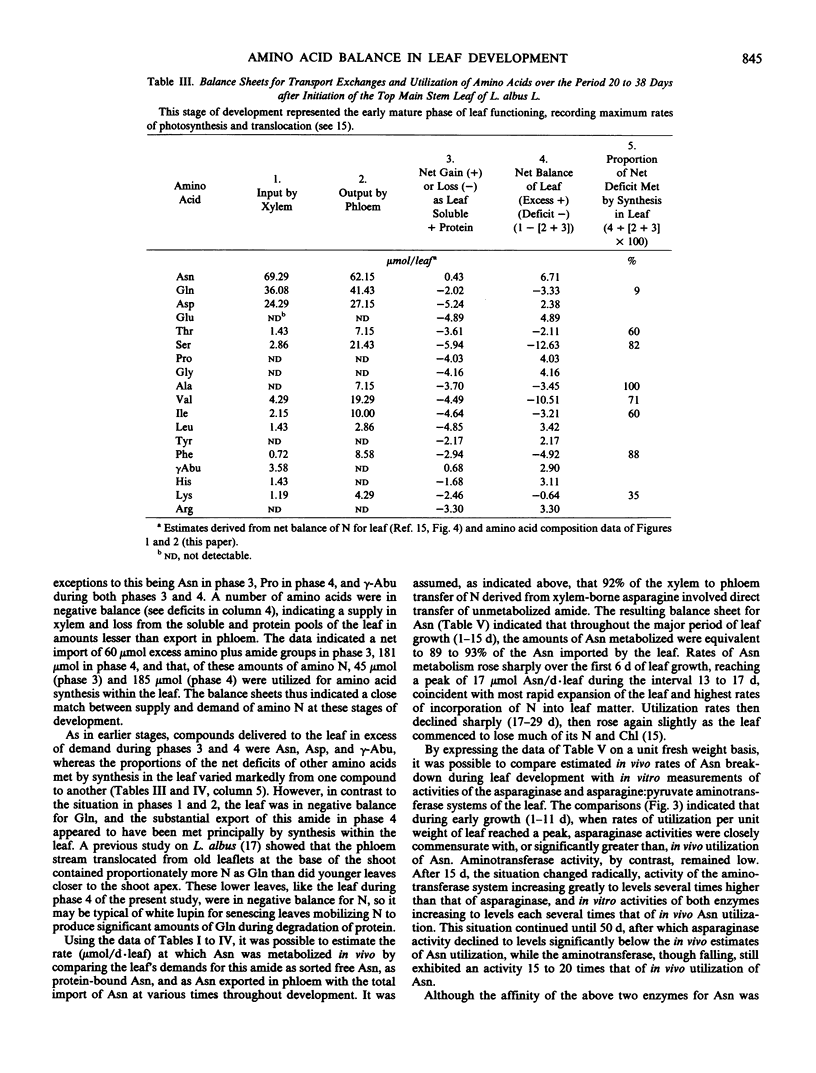
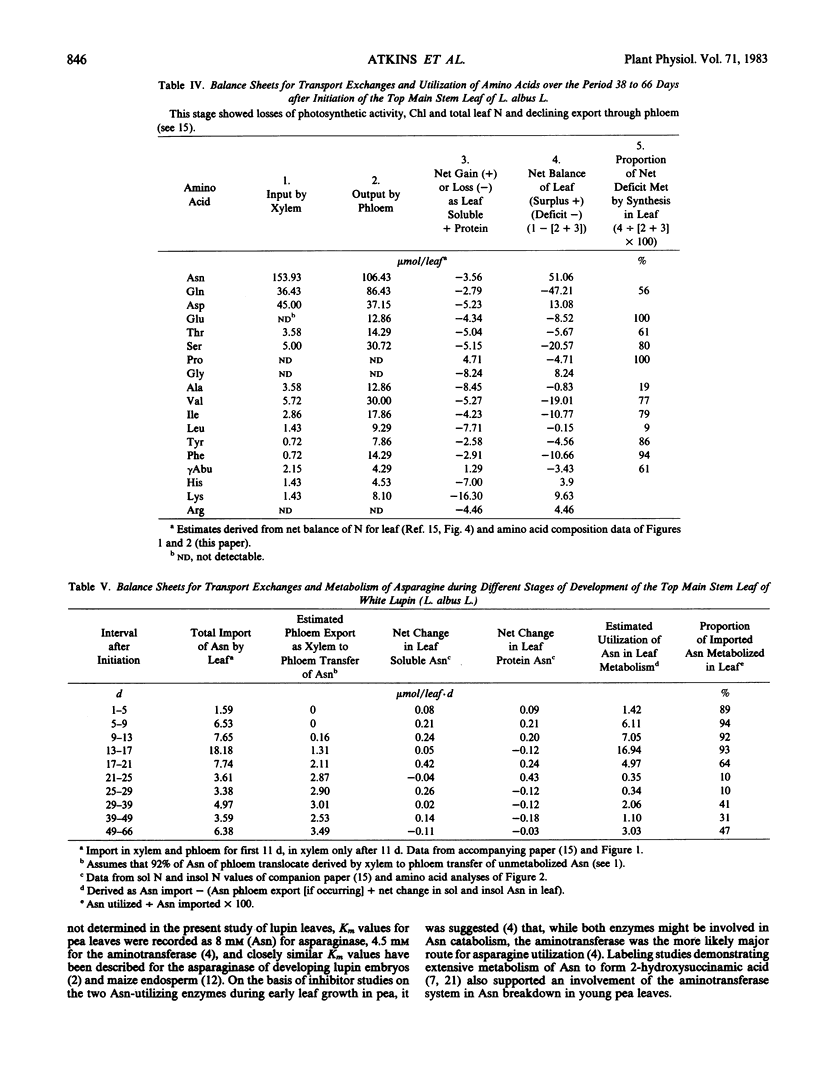
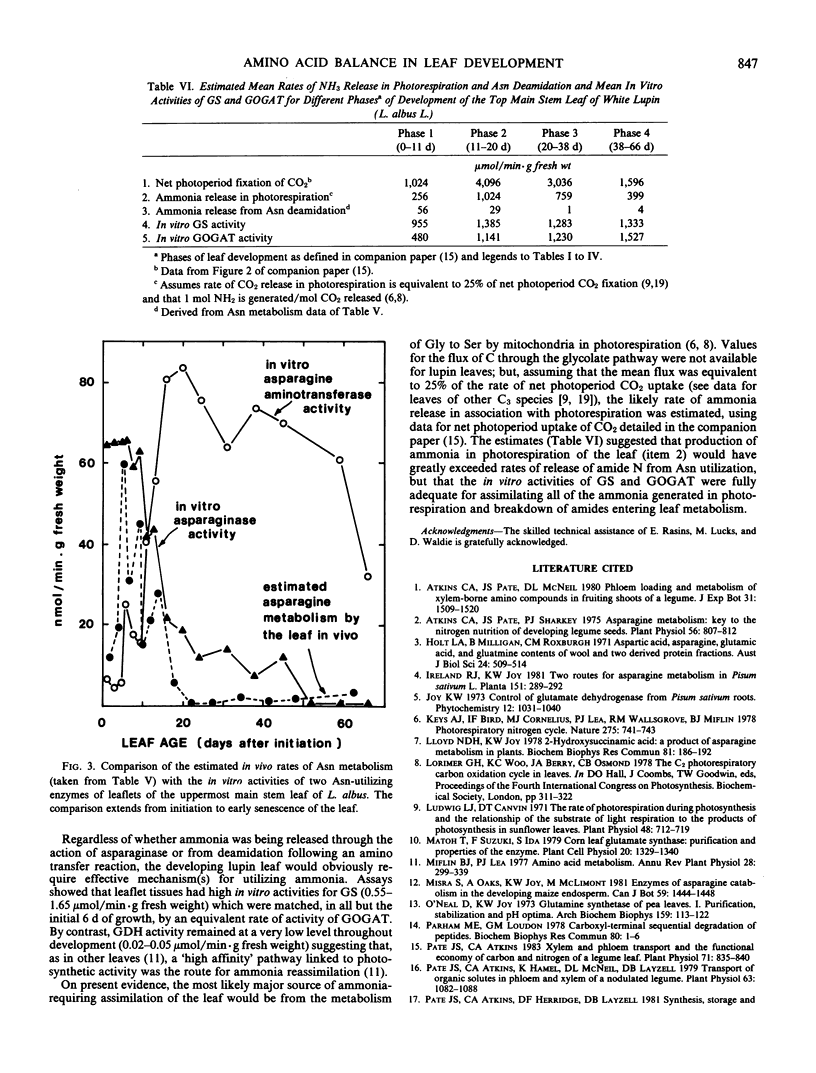

Selected References
These references are in PubMed. This may not be the complete list of references from this article.
- Atkins C. A., Pate J. S., Sharkey P. J. Asparagine metabolism-key to the nitrogen nutrition of developing legume seeds. Plant Physiol. 1975 Dec;56(6):807–812. doi: 10.1104/pp.56.6.807. [DOI] [PMC free article] [PubMed] [Google Scholar]
- Holt L. A., Milligan B., Roxburgh C. M. Aspartic acid, asparagine, glutamic acid, and glutamine contents of wool and two derived protein fractions. Aust J Biol Sci. 1971 Jun;24(3):509–514. doi: 10.1071/bi9710509. [DOI] [PubMed] [Google Scholar]
- Lloyd N. D., Joy K. W. 2-Hydroxysuccinamic acid: a product of asparagine metabolis in plants. Biochem Biophys Res Commun. 1978 Mar 15;81(1):186–192. doi: 10.1016/0006-291x(78)91647-9. [DOI] [PubMed] [Google Scholar]
- Ludwig L. J., Canvin D. T. The Rate of Photorespiration during Photosynthesis and the Relationship of the Substrate of Light Respiration to the Products of Photosynthesis in Sunflower Leaves. Plant Physiol. 1971 Dec;48(6):712–719. doi: 10.1104/pp.48.6.712. [DOI] [PMC free article] [PubMed] [Google Scholar]
- O'Neal D., Joy K. W. Glutamine synthetase of pea leaves. I. Purification, stabilization, and pH optima. Arch Biochem Biophys. 1973 Nov;159(1):113–122. doi: 10.1016/0003-9861(73)90435-9. [DOI] [PubMed] [Google Scholar]
- Parham M. E., Loudon G. M. Carboxyl-terminal sequential degradation of peptides. Biochem Biophys Res Commun. 1978 Jan 13;80(1):1–6. doi: 10.1016/0006-291x(78)91095-1. [DOI] [PubMed] [Google Scholar]
- Pate J. S., Atkins C. A., Hamel K., McNeil D. L., Layzell D. B. Transport of organic solutes in Phloem and xylem of a nodulated legume. Plant Physiol. 1979 Jun;63(6):1082–1088. doi: 10.1104/pp.63.6.1082. [DOI] [PMC free article] [PubMed] [Google Scholar]
- Pate J. S., Atkins C. A., Herridge D. F., Layzell D. B. Synthesis, Storage, and Utilization of Amino Compounds in White Lupin (Lupinus albus L.). Plant Physiol. 1981 Jan;67(1):37–42. doi: 10.1104/pp.67.1.37. [DOI] [PMC free article] [PubMed] [Google Scholar]
- Pate J. S., Atkins C. A. Xylem and Phloem transport and the functional economy of carbon and nitrogen of a legume leaf. Plant Physiol. 1983 Apr;71(4):835–840. doi: 10.1104/pp.71.4.835. [DOI] [PMC free article] [PubMed] [Google Scholar]
- Urquhart A. A., Joy K. W. Transport, metabolism, and redistribution of xylem-borne amino acids in developing pea shoots. Plant Physiol. 1982 May;69(5):1226–1232. doi: 10.1104/pp.69.5.1226. [DOI] [PMC free article] [PubMed] [Google Scholar]
- Urquhart A. A., Joy K. W. Use of Phloem exudate technique in the study of amino Acid transport in pea plants. Plant Physiol. 1981 Sep;68(3):750–754. doi: 10.1104/pp.68.3.750. [DOI] [PMC free article] [PubMed] [Google Scholar]


